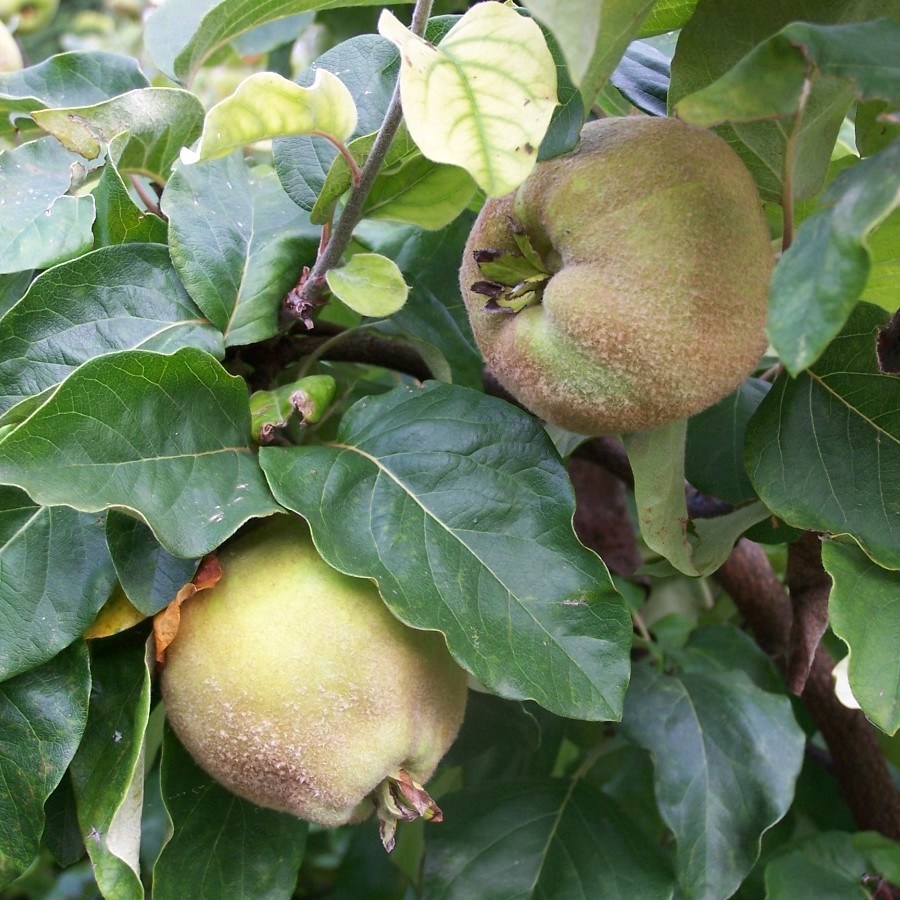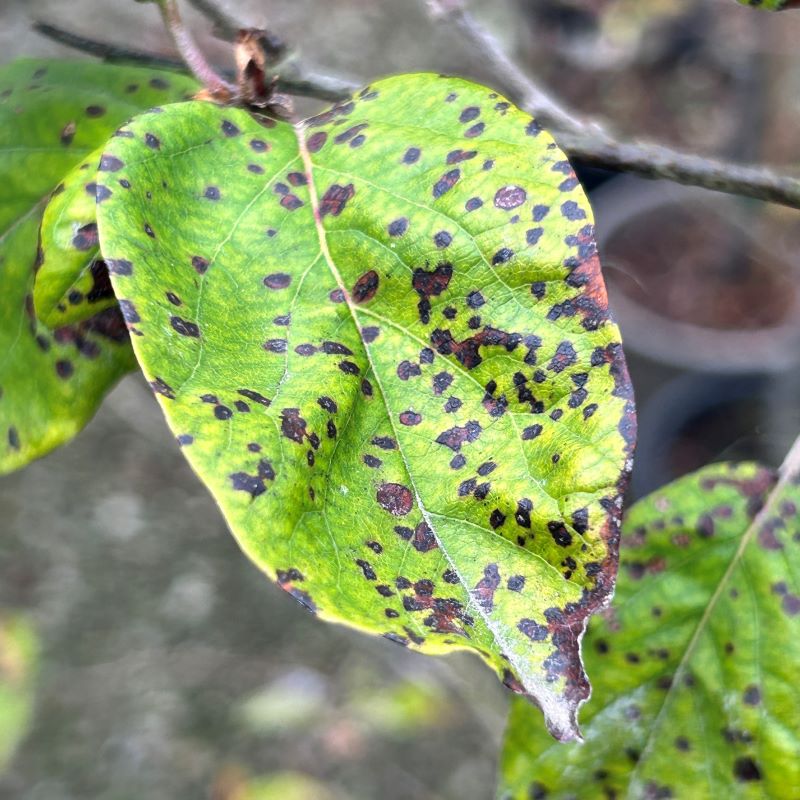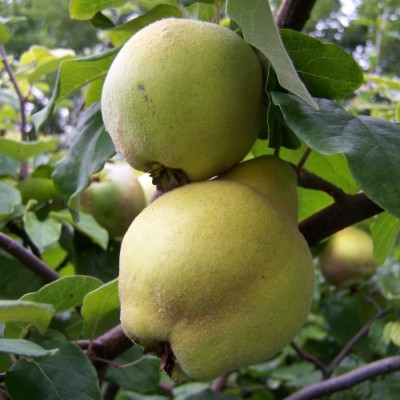Quince have been cultivated for thousands of years. originally from the plains of Mesopotamia (an area which included present day Iraq, as well as parts of Iran, Syria and Turkey). The fruit was known to the Akkadians, one of the earliest civilisations, and its cultivation was spread by both the Greek and Roman empires. By the 1300’s quince were being grown in the U.K., and were very popular in medieval times.

Cultivation.
Despite their Middle Eastern origins, quince are very hardy - the trees will happily grow outside in all parts of the U.K. To flower well they need a period of winter chill - 60 days with average temperatures under 7c - so do better outside than when grown under cover. Tolerant of a wide range of soils, but do best in fertile loams which don’t dry out. They tolerate wet soils better than any other top fruit tree - although no fruit tree will survive soil which is waterlogged for weeks on end.
Trees are grafted onto a rootstock, which governs the ultimate height of the tree. Quince C is the most dwarfing, most varieties will get to about 2.5m or so on this rootstock. Quince A is a little more vigorous, making a tree about 3.5m tall, and is the best for general garden use anywhere north of the Midlands. Seedling pear is a vigorous rootstock, and will produce an orchard sized tree 6m tall eventually, although trees grown on this stock are increasingly hard to find.
Leaves emerge in mid-spring, almost acid green in colour, large and rounded with a fine covering of silver hairs. Flowers are large, pale pink, and it’s a wonderful sight. A quince tree one of the most ornamental of any fruit, and can easily hold its own in a decorative border or front garden. All varieties are self-fertile, so a single tree will happily set fruit, although having other quince nearby does help increase yields.
Pear-shaped fruits swell through the summer, apple green and covered with peach fuzz, before ripening and turning lemon yellow in mid-September. They will remain hard and inedible in this country - our summers are nowhere near hot enough for the fruit to soften - but wait to the last moment before picking (snipping off the fruit with scissors can be easier, as pulling the fruit risks damaging branches).
Quince are part of the Pome fruit family, along with apples and pears, and pruning is much the same. For the first few years, prune in winter to encourage a nice open branch framework, shortening new growth by about 50%. The buds beneath that cut will grow away the following summer in the direction they are facing. Quince trees can easily get congested, which can increase the risk of mildew (see below), so pay particular attention to removing crossing branches and any stems growing into the centre of the tree.
Quince trees generally need very little feeding - a small dose of a general fertiliser in spring will normally be adequate. on very chalky alkaline soils you may see foliage turning yellow (chlorosis), in which case you can give the tree a small handful of Epsom Salts, or a feed suitable for Ericaceous plants.
Pests and diseases.
Quince don’t suffer from the main scourges of fruit trees, namely scab and canker, but there a couple of potential problems to look out for.

Leaf blight. Probably the most common issue with growing quince, it causes unsightly brown spots on the foliage in spring which gradually darken over the summer. In bad years every leaf can be affected, and the tree will look very sorry for itself. The good news is that its bark is much worse than its bite - the tree will not be aesthetically pleasing, but it won’t cause any lasting damage. Pick off the worst affected leaves a soon as you see them to try and limit the spread, but don’t take off more than 25 % of the foliage, otherwise you start to weaken the tree more than the blight will. New foliage will appear after a few weeks, and in most years this is normally clean and blight free. Blight is much worse in years with wet weather in the spring, so this year it has been particularly troublesome. As with all pests and diseases, good hygiene is key - rake away fallen leaves in autumn and a winter wash in January will give you a clean start the following spring.
Powdery mildew can also be an issue, more so in the drier parts of the country. It’s a fungal disease where the surfaces of leaves become covered with a fine white powder. Again, it causes no serious damage, but it does weaken the tree as the leaves don’t reach full size and can’t photosynthesize properly. Dry soil and poor air circulation increase the odds of mildew taking hold, so remember to prune out, and mulching the soil around the tree just before the foliage helps to both lock in moisture and trap any overwintering fungal spores. In bad cases prune back infected stems, then feed and water well.
Recommended varieties:
Vranja and Champion produce some of the largest fruit, are generally a little more vigorous in growth and are early to crop. However, they are among some of the more susceptible varieties to quince leaf blight.
Serbian Gold and Meech’s Prolific have medium sized fruit, but are the most resistant to leaf blight.
Portugal is the most compact in growth - on Quince A rootstock it won’t get taller than 3m and can easily be kept smaller, so ideal if space is limited.
Isfahan – a variety from Iran, which in very warm sites can produced fruit which is almost sweet enough to eat from the tree. To date we haven’t experienced a summer warm enough here in North Yorkshire for this to be the case however.
Ekmek – originally from Turkey, has a finer flesh which is less grainy than some others. The fruit is large.
Seibosa – an unusual variety originating from Serbia. Hardy and reliable to crop.
Ivan – huge pear-shaped fruit, a variety originally from Russia and similar to Isfahan in that fruit can ripen and become sweet after a long hot summer.


